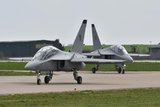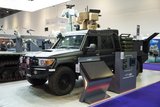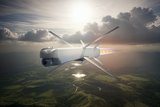Enhancing Military Training Through Digital Technology (Studio)
Brought to you in partnership with Capita
The transformative impact of artificial intelligence (AI) and other emerging technologies is clear, with no signs of slowing development. This trend holds significant implications for military training and retention.
To harness these technologies effectively, militaries need to focus on continuous learning and adaptation, ensuring that training programmes remain relevant and efficient. This involves not just integrating new tools but also fostering a culture of innovation and flexibility.
Issues related to training and retention were a major focus of the Haythornthwaite review of UK Armed Forces incentivisation. The review emphasised the importance of agility and flexibility in service, along with the need to enhance recruitment and retention efforts.
The review also highlighted the growing necessity for personalised training modules that can cater to individual learning styles and paces, thereby increasing engagement and effectiveness. Moreover, it pointed out the need for better integration of feedback mechanisms to continuously improve training quality.
‘People already expect a digital approach, and this will only become more critical for future generations,’ the report stated.
Blended Learning
Capita, a leading training provider for the UK Armed Forces, plays a key role in the digitalisation of military education, and recruitment.
The company has introduced technological advances through such efforts as Project Selborne, where the Capita-led Team Fisher consortium provides shore-based training for sailors and marines through a twelve-year project and an ambitious partnership with the British Army that has transformed recruitment delivery for the service.
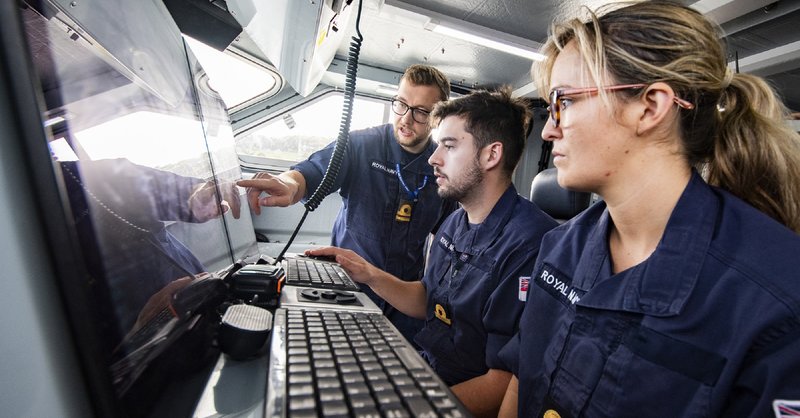
Jessica Chatburn, Director of Learning Experience within Workforce Development in Capita, stated that digital transformation enhances defence training on three levels: boosting effectiveness, improving efficiency, and increasing adaptability.
For example, Chatburn pointed to the impact of simulation and virtual reality (VR). Using computer-generated scenarios to mimic real-life combat and other activities has long been a valued part of modern training.
Another example of blended learning is the use of VR and haptic equipment for training at the Capita Fire Service College in Gloucestershire, which will soon extend to training personnel from the Defence Fire and Rescue Project (DFRP).
Still, it is advancing rapidly, ‘allowing for a more cost-efficient and pragmatic approach to training without having to place people in dangerous situations’, Chatburn said.
She explained that digitally enabled packages provide far greater opportunities for blended learning, enabling a mixture of classroom training and training from home.
AI Advantages
However, AI stands out as one of the most impactful digital innovations in training and beyond.
Chatburn noted that AI offers significant potential for addressing military educational needs. Capita, for example, is exploring opportunities with LEAF (Learning Enhancement through AI Framework) and other AI technologies to streamline the development of training programmes.
The use of Generative AI technology helps create training programmes tailored to the needs of individual personnel, personalising the process for increased effectiveness and creating training programmes in days rather than months.
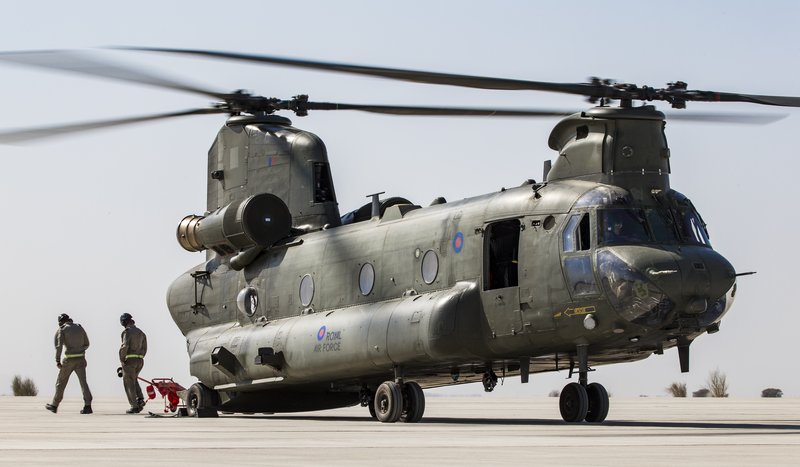
AI-driven analytics can also identify training gaps and predict future needs based on data trends, allowing for proactive adjustments in training programmes. This predictive capability ensures that training remains aligned with evolving operational requirements and personnel needs.
Such digital advances can have a real impact across the board, addressing critical skills gaps in areas such as cyber security or data analytics, as well as in supporting leadership training.
Nick Juba, Capita’s Director for Learning, oversees the company’s education and training work with the Royal Navy. He also pointed to advances in simulation, for example through bridge trainers, enabling trainees to roleplay different scenarios from the bridge of a ship.
Juba highlighted the impact of new technologies on how training is delivered. For example, the use of tablets and other mobile devices in training facilitates real-time updates and communication, ensuring that trainees always have the most current information and resources at their fingertips. This connectivity supports a more dynamic and responsive training environment.
AI enables the delivery of adaptive and nonlinear routes through learning, Juba added, and can guide learners through courses at their own pace.
Capita is also part of the Omnia Training consortium, bidding to become the Strategic Training Partner for the British Army’s Army Collective Training Service (ACTS) programme.
The capability will allow the British Army to use modern training technologies and methodologies such as synthetic training environments, advanced data, and connectivity solutions to train soldiers and commanders for complex warfare scenarios.
Striking a Balance
Do these developing technologies spell the end of military training as we know it? No: it is vital to strike a balance, retaining the advantages of traditional, in-classroom learning while embracing the benefits of digitalisation.
The Royal United Services Institute (RUSI) highlighted this balance in its 2023 paper, "Goodbye Mr Chips? Modernising Defence Training for the 21st Century", published in partnership with Capita.
‘Defence training needs to become more digitally relevant, but this does not mean merely replacing classrooms with online learning – both modes of learning have their place, but effective distributed learning needs to be resourced and enabled, including changing the organisational culture to enable individuals to undertake self-education,’ the report argued.
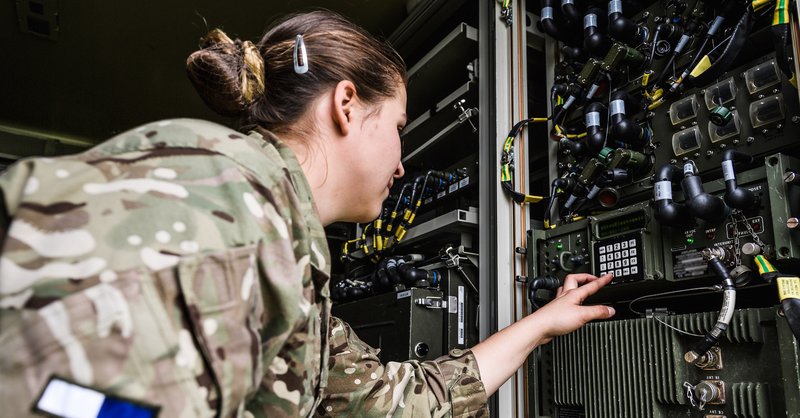
This is a crucial point, said Juba. It’s vital to use technology to enhance training needs where possible rather than viewing it as the only answer to all training challenges. The key is to develop a personalised learning approach, he said.
‘Learning itself is the important part – technology can play a role supporting that, but it’s not an end in and of itself.’
The goal is to deliver high-quality learning for a better-skilled workforce, utilising the advances of digital technology. Education and training must serve the needs of the organisation, said Juba. For instance, in the case of the Royal Navy, this means ‘ensuring that there are competent sailors and marines flowing through to the front line’.
Personalised learning approaches also involve continuous assessment and feedback mechanisms that help identify areas for improvement and tailor subsequent training accordingly. This ensures that each trainee reaches their full potential and is fully prepared for their role.
Agile Innovation
A flexible, agile approach – enhanced by technology – can also help militaries adapt to the needs of new learners.
‘The world has changed beyond recognition in the last generation, and young men and women expect an experience, a lived experience in the [Royal] Navy, that is different to the one that their parents might have expected,’ said Juba.
‘That’s why it’s so important that education and training is more aligned to individual wants and needs, as well as those of the wider organisation.’
Chatburn said the type of blended learning solutions offered – combining digital and physical training – could be a template for the coming years.
‘Some traditional classroom-based training can be replaced or improved or enhanced with technology,’ she said.
‘However, there will always be on-the-ground experience that they will need: it’s about finding the right balance for the learners and the wider organisation.’
More from Studio
-
![Light Reconnaissance Strike – enabling a vital mission set (Studio)]()
Light Reconnaissance Strike – enabling a vital mission set (Studio)
A new system-of-systems concept will unlock digital integration of sensors and weapons for Light Forces, allowing them to shape the battlefield environment on their own terms and upgrade legacy platforms.
-
![Energy evolution: How laser defence systems are powering the next phase of air defence (podcast)]()
Energy evolution: How laser defence systems are powering the next phase of air defence (podcast)
Laser-based air defence is moving from promise to deployment as global threats evolve. In this special podcast, we explore how high-energy laser systems are reshaping interception strategies.
-
![Unlocking the potential of Light Forces in modern warfare (Studio)]()
Unlocking the potential of Light Forces in modern warfare (Studio)
The Ukraine conflict has highlighted the strategic importance of “Light Forces” – rapidly deployable dispersed units, able to conduct an expanding range of mission sets. What technologies and equipment are needed to ensure their success in combat?
-
![Resilience, adaptiveness and collaboration vital for success in space (Studio)]()
Resilience, adaptiveness and collaboration vital for success in space (Studio)
Speakers at the Defence In Space Conference (DISC) 2025 highlighted the critical and evolving role of space in national security, defence and the global economy.
-
![Precision on Demand: The New Age of Loitering Weapons (Podcast)]()
Precision on Demand: The New Age of Loitering Weapons (Podcast)
Loitering munitions provide vital capabilities in the disrupted and unpredictable modern battlespace, from real-time ISR to a virtually “on demand” strike capability. Rafael is looking to the future of the technology, empowering systems to operate with increasing autonomy in hostile environments.
-
![Beyond Survivability: How Active Protection Systems Are Empowering Commanders (Podcast)]()
Beyond Survivability: How Active Protection Systems Are Empowering Commanders (Podcast)
As threats diversify and intensify, APS are proving essential not just for vehicle protection but also for enhancing operational freedom, effectiveness and mission success in contested environments.









